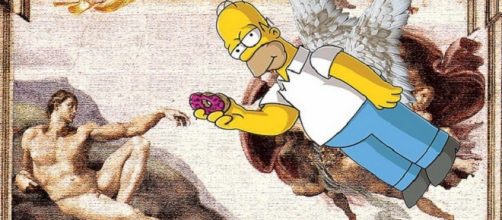Homer Simpson may not be an actual person but the makers of the hit cartoon show The Simpsons are set to pander to fans who may like to think that he is. A special episode has been announced which will feature a live segment, enabling the loveable if slightly anarchic head of the household to respond to questions posed by the viewers.
Eager American fans are sure to be enthralled at the possibility of putting those questions that they have always wanted to ask directly to Homer as part of the programme. The live three-minute section of the show - due to be aired on 15th May in the States - will allow Homer to answer those questions ‘personally’ or as near to that as is ever likely to be possible with an animated persona involved.
Producers are expected to place the section at the end of the show.
But surely it isn’t really live?
In case there are any doubters out there who may think that the section was pre-recorded beforehand, it has been disclosed that Homer will discuss things that he could “only be saying live on that day.”
How is it possible?
The novel concept has been made possible through motion-capture (‘MoCap’) technology, a technique that is becoming more common within the entertainment industry. ‘MoCap’ technology allows more realistic human movements to be produced in films and games.
It works by taking the capture of a recorded motion and then mapping it on to a digital model in 3D software (e.g. Maya or 3D Studio Max).
In essence, the digital character is then viewed as moving in the same manner that the actor did in the recording.
Origins of ‘MoCap’
‘MoCap’ technology has been utilised extensively in the video game industry since the mid-1990s and also in films such as ‘The Lord of the Rings’ (such as the character ‘Gollum’) and the blockbuster ‘Avatar’.
Its origins can be traced back to the rather more traditional technique of ‘cel animation’ that featured in films as far back as ‘Snow White and the Seven Dwarfs’ in the 1930s. To help achieve a more realistic effect then, actors acted out the scenes and were filmed doing so. The animators would then utilise the individual frames to guide them in the production of their drawings.
History of innovation on the show
‘The Simpsons’ is well-known as a programme that seeks out innovative ways to entertain its ever-challenging and demanding audience. In 1995, an episode entitled “Treehouse of Horror VI” featured a final segment in which Homer was trapped in a three-dimensional world. At the end of the three-section episode in the first ever live-action scene on ‘The Simpsons’, Homer was transported to the real world.
Viewers flocked to watch the original episode, with almost 23 million tuning in, and the critics also celebrated its novelty by awarding the third segment the grand prize at the Ottawa International Animation Festival.

